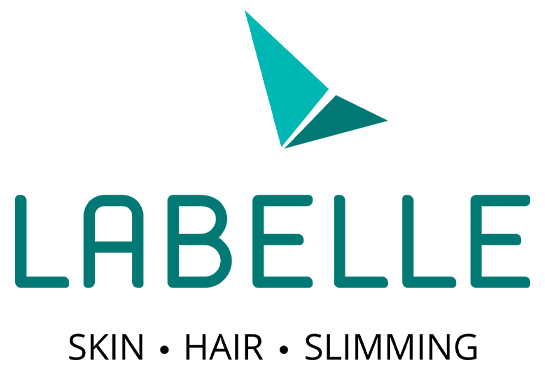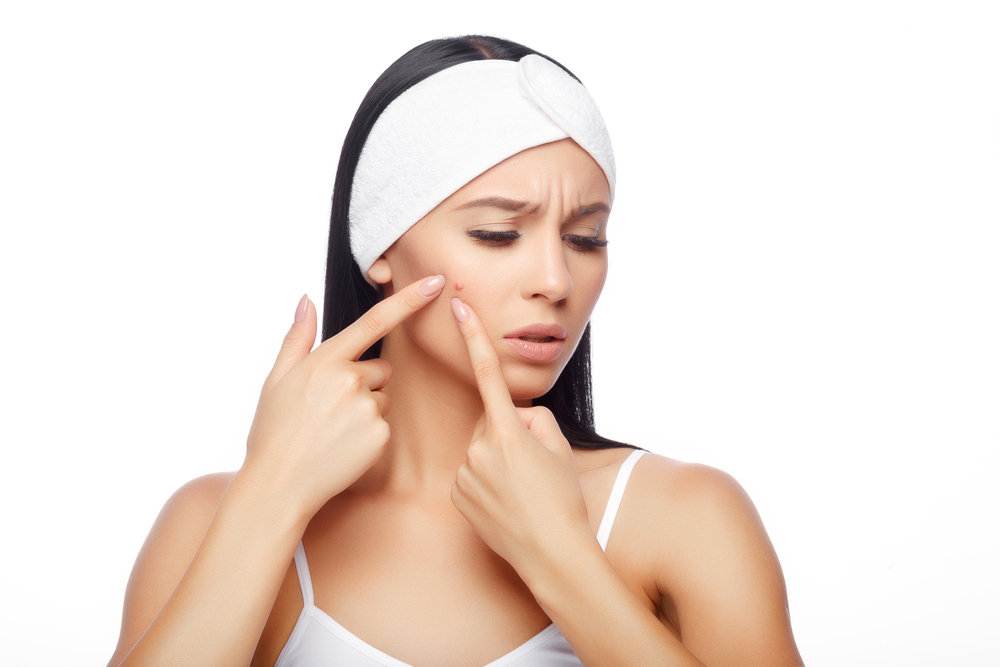How To Get Rid Of Small Bumps On Face
Are those pesky small bumps on face putting a damper on your day? We understand the frustration. But hold off on rushing to the nearest pharmacy or beauty bar just yet.
Small bumps on face could indicate various issues, such as acne or the emergence of a new mole, but they might also signify skin conditions like milia or keratosis pilaris.
Regularly inspecting one’s skin and consulting a physician upon noticing any new or evolving skin symptoms is advisable.
Before we dig deep into how to get rid of bumps on face, let us understand what are these face bumps that have become a cause of worry to many.
Types Of Face Bumps
• Acne
Forehead acne, appearing as small bumps, can result from various types of acne:
• Comedones (whiteheads, blackheads)
• Papules (larger inflamed bumps)
• Pustules (red papules with pus)
• Nodules and cysts (larger, deeper lesions)
• Milia
Milia are small, white forehead bumps caused by trapped dead skin cells. Common in newborns, they can also affect children and adults. Primary milia often clear up on their own, while secondary milia can result from skin damage.
• Rosacea
Rosacea, a skin condition, leads to redness and bumps, typically on the face. Symptoms comprise acne-like papules, skin thickening (especially the nose), visible blood vessels, dry eyes, and vision issues. It affects various individuals.
• Contact Dermatitis
Contact dermatitis occurs when the skin comes into contact with a triggering substance, causing a rash. Allergic contact dermatitis arises from allergens like nickel, while irritant contact dermatitis results from skin irritation, often from harsh substances. Symptoms include itching, swelling, blisters, and dryness.
• Warts and Moles
Bumps resembling warts typically display a darker coloration, often brown or black, accompanied by a crusty texture. On the other hand, moles, similar to small, tiny bumps, may emerge from chronic conditions and are characterised by pigmentation.
• Ringworm
Ringworm, a fungal infection, may present as small bumps, often forming a circular rash that can be either clear or scaly. Symptoms include itching and alterations in skin pigmentation. Transmission can occur via direct contact.
• Folliculitis
Folliculitis, inflammation of hair follicles, can lead to small forehead bumps with pus. Often caused by bacterial infection, it can result from skin irritation from shaving or touching. Symptoms include pain, tenderness, itching, and pus-filled blisters.
Conditions That Cause Raised Skin Bumps on the Face
• Overexposure to sunlight without protecting your skin,such as avoiding the use of umbrella or cap can lead to the development of white bumps on the face.
• Small bumps on face during adolescence or pregnancy are often attributed to hormonal fluctuations.
• Facial bumps frequently arise due to inflammation as a major contributing factor.
• When you shave, those pesky bumps can pop up because of cuts and hairs growing back into the skin.
• When your skin reacts to something like nickel or poison ivy, it’s usually because of an allergic response.
• A side effect of skin care products or excessive use of cosmetics can result in tiny bumps on face.
You need to identify the specific cause of small bumps to determine the most appropriate treatment to get rid of bumps on face. Consulting with a dermatologist can help diagnose the underlying issue and develop an effective treatment plan.
Symptoms of Bumps On Face
• In the early stages of skin-related problems like bumps, inflammation and irritation of the skin are commonly observed.
• Thick, rough bumps may have a waxy or scaly appearance.
• An acne cyst may be crusty.
• A large, clear, watery blister exceeding 1 centimeter in size.
• Rashes on the body can indicate the presence of bumps on the face.
• A red lump under your facial skin that is painful or tender to touch.
• The bump can vary in size, ranging from as small as a pea to as large as a dime, and may discharge pus from a whitish-yellow head.
• Dry skin can be a symptom, resulting in significant skin deformities.
When Should You Seek Medical Advice For Facial Bumps?
Wondering when it’s time to see a doctor about those pesky facial bumps? If they’re getting worse, causing pain, or making you feel self-conscious, it’s a good idea to book an appointment with a dermatologist to get rid of bumps on face.
A dermatologist can pinpoint what’s causing your bumps and customise a treatment plan to remove those bumps.
Don’t wait if you’re feeling unsure or uncomfortable—getting expert help can make all the difference in getting your skin back on track.
Treatments For Bumps On Face
• Laser Technology
Laser technology treats facial bumps as per individual skin needs. Pixel lasers, adopted by dermatologists, target scarred tissue and stimulate collagen production for natural facial skin healing.
• Cryotherapy
Cryotherapy is a modern treatment for small facial bumps, providing quick relief. It involves freezing the bumps with liquid nitrogen to reduce swelling and prevent infection spread, followed by careful removal.
• Chemical Peeling
Chemical peels entails exfoliative agents to resurface the skin and promote regeneration of normal skin.
By removing the top layer of skin, it targets issues like bumps, scars, sun damage, and pimples, while promoting the growth of healthy tissue.
• Dermabrasion
Dermabrasion is a surgical procedure that can be done as an outpatient treatment by a trained medical professional. It involves carefully scraping or removing layers of skin, typically from the surface to the mid-layer, depending on the size and severity of the skin issues being addressed.
Curettage is a procedure similar to Dermabrasion, often employed to remove fleshy bumps on the face. It involves scraping them off with a sharp microscopic tool, prompting collagen production for smoother, more even skin.
• Medications
Topical medication is the basic treatment for small bumps, using products with ingredients like salicylic acid or benzoyl peroxide to clean the skin.
Oral medications are pills taken along with topical treatments to fight infection from the inside out. They are antibacterial and antifungal, stopping the problem from getting worse.
Benefits of the Treatment
• Ensures consistent results
• Removal of dead skin cells
• Softens dry skin
• Improves discoloration of the skin
• Appropriate for all skin tones
• Suitable for all skin types as it aids in restoring the skin’s natural radiance
• Restores firmness of the facial skin
Cost of the Treatment
The cost to get rid of bumps on face depends on the following factors:
• The bumps on face treatment selected
• The underlying cause of the bump condition
• The severity of the facial bump condition
• Individual’s medical history
• The skill and expertise of the practitioner administering the treatment.
• Location of the clinic in the city, where the treatment is held
• The latest tools and technology utilised to treat bumps on the face
• Number of sessions
Prevention Of Bumps On the Face
Ensuring the health of your facial skin involves several key practices. Incorporating the below-mentioned tips into your skincare routine can help promote healthier facial skin and minimise the occurrence of bumps and blemishes:
• Protecting your skin from the sun is highly important. Avoid prolonged exposure between 10 a.m. and 4 p.m. Apply 1 ounce of SPF 15 sunscreen 30 minutes before going outside. For extended periods, use SPF 30+ broad-spectrum sunscreen and quickly reapply every 2 hours.
• Make sure to wash your face every day with warm water and a facial cleanser, then use an oil-free moisturiser afterward.
• Be cautious with makeup for covering blemishes, as heavy, greasy products can worsen acne. Choose water-based, oil-free makeup and mineral-based products with silica, titanium dioxide, and zinc oxide to absorb oil and minimise redness.
• Excess hair oil can worsen facial bumps and acne. Regularly washing hair near the hairline helps prevent this. Avoiding oily hair products will reduce the risk of developing facial bumps and pimples.
• Opt for a balanced diet packed with fresh fruits and veggies, especially those high in vitamin C and beta-carotene. These nutrients can help cut down and cure inflammation.
• Be gentle when shaving and don’t overuse products. Also, don’t share personal items like towels or razors to prevent spreading infections.
Labelle’s Personalised Solutions for Bumps and Blemishes
We understand your painful moments when you notice unexpected tiny bumps on face and have no clue what they are.
Well, at Labelle, our team of friendly and experienced dermatologists is here to help you navigate through these skin concerns. After thorough tests and analysis, we provide you with personalized treatment options that cater to your unique needs.
Whether you are dealing with acne – Labelle has got you covered.
The expert dermatologist takes the time to educate our clients on how to identify bumps based on their color, size, and other characteristics.
So, if those mystery bumps are starting to affect your confidence, go ahead and book your appointment at any of our clinics. Let us show you how our tailored approach can improve your skin.
FAQs
1. What are common symptoms of bumps on the face?
Inflammation and irritation are often observed during the early stages of skin issues like bumps.
2. Can rashes on the body indicate bumps on the face?
Yes, rashes on the body can sometimes be a sign of bumps developing on the face.
3. Why is overly dry skin a concerning symptom?
Overly dry skin can lead to severe skin irritation if not addressed promptly.
4. What are cysts, and why shouldn’t they be ignored?
Cysts are tiny bumps under the skin on the face that can lead to the formation of a cyst, potentially indicating underlying health issues.
5. What are the benefits of a chemical peel?
Chemical peels can improve the appearance of the skin by reducing wrinkles, evening out skin tone, and minimising the appearance of scars and blemishes.

